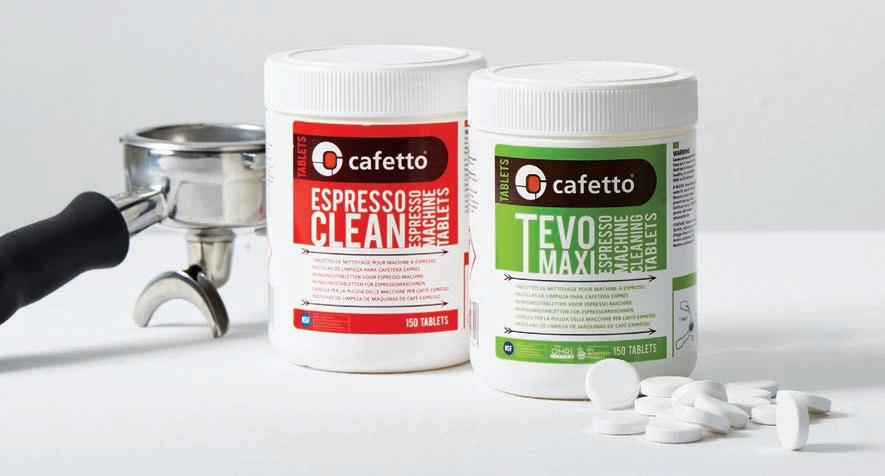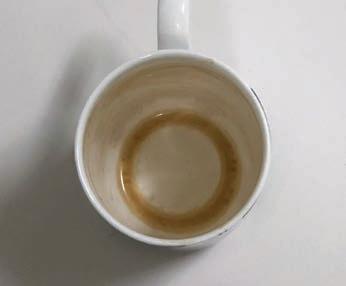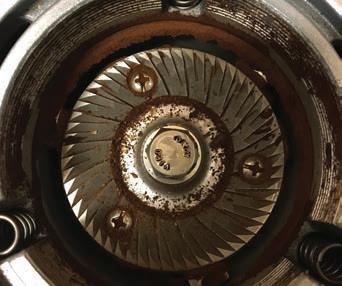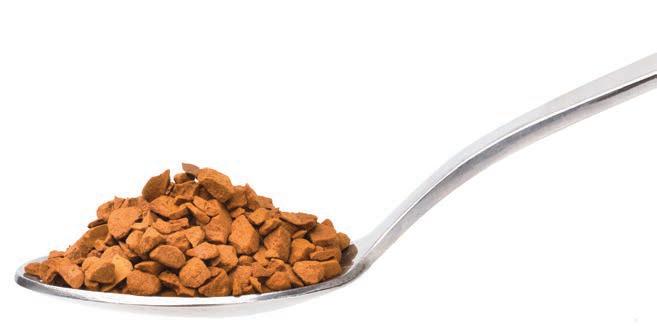
5 minute read
GOOD HYGIENE
from GCR May 2020
by Prime Group
CAFETTO DISCUSSES THE INCREASED IMPORTANCE OF CLEANING EQUIPMENT AND MAINTAINING HYGIENE IN THE COFFEE INDUSTRY.
COVID-19 has illustrated to many people the importance of a clean and sanitary environment. In hospitality, this goes beyond front of house and service areas to food and beverage preparation.
To help the coffee industry maintain safe hygiene and cleaning practices, Australia-based company Cafetto has developed a broad portfolio of products suited to different equipment and requirements.
“At this crazy time, everyone’s concern is that they don’t want to get or spread the coronavirus,” Cafetto General Manager Christine Song says. “Cleaning surfaces and equipment as much as you can has always been good practice, but the current pandemic shows just how important it really is.”
With many venues around the world turning to drive-through, takeaway, or delivery to continue operation, customer service has become less of a differentiator in the market. This means they need to focus more on quality to maintain customers.
“The core reason to clean a coffee machine is to produce the best coffee possible with it. If you have residue built up where you’re extracting espresso, it affects the quality, crema, and flavour of the drink. Dirty coffee is never the best coffee,” Song says.
“Hygiene may be particularly important now, but we also want to serve the best coffee possible. A clean machine is imperative to that.”
Cafetto’s traditional Espresso Clean tablets and powders are designed to clean a group head through a simple backflushing process with a blind portafilter. When dissolved in water, Espresso Clean produces a foamy solution that removes built-up coffee oils and residue. After rinsing, the group head is ready for use.
“This is not regular detergent. It is a specially formulated product that fits the specific demands of a traditional espresso machine,” Song says. Cafetto has formulated its products to work specifically with coffee equpment.
“Regularly cleaning a machine will make its lifespan longer, require less maintenance, and keep the quality higher.”
With many years of experience in the coffee industry, Cafetto is aware that a cleaning product that works in one role will not necessarily be able to fill another. That’s why the company consults with industry members to cater to new demands as they arise.
“We don’t ignore existing or potential customers when they’re having problems cleaning their equipment. We always look at what people need and how we can provide a solution,” Song says.
“Our research and development team carry out many projects where a customised solution is required to solve a customer’s problem. That’s how we went from one product to a full range that cleans different types of equipment.”
Through discussions with manufacturers, Cafetto learned of the issue scaling presents to the boiler of an espresso machine. Scaling occurs when water turns to steam and leaves behind trace amounts of minerals like calcium and magnesium carbonate. Over time this can form a crust in the boiler than cannot be removed with regular filtration.
“If scaling builds up, there is less room for water and it becomes difficult to create good steam,” Song says.
“We support descaling as often as the manufacturer recommends. It is important to keep on top of because many manufacturers don’t provide warranty if descaling isn’t performed.”
On the outside of a coffee machine, the steam wand can be soaked in Cafetto Milk Frother Cleaner to remove milk residue, needing only a wipe down and purge afterwards. Song says automatic machines, on the other hand, have a more complicated milk system and require frequent cleaning.
“Milk actually runs through an automatic coffee machine and crosses over with coffee
to produce drinks like a latte or cappuccino,” she says.
“This system needs to be cleaned and sanitised every day, and this is where we recommend using our Milk Frother Cleaner every day.”
Cleaning the coffee components of super automatics, however, tends to be easier than traditional machines. Song says many have inbuilt cleaning cycles, and operators only need to insert a Cafetto tablet and run the process with the touch of a button. Cafetto offers a range of tablets, in different shapes and doses, for different automatic coffee machines.
Different products are also available for other types of brewing equipment. Cafetto Brew Clean is compatible with a wide range of coffee brewers, such as Bunn, Marco, Moccamaster, Breville, and larger batch brewing units. Song says hot water alone isn’t enough to remove coffee oils and stains from these brewers.
A missing piece in Cafetto’s product portfolio that was recently filled was a solution for cold brewing equipment. Cafetto Polar Clean can be used to clean blenders and cold brew systems, including Toddy, Brewista, and nitro units.
“Most cleaning products need to be used with warm to hot water, but you don’t typically want to expose this equipment to high temperatures,” Song says.
“Polar Clean works similarly to our other brewing cleaning products, but was designed to clean and sanitise with cold water.”
Another niche Cafetto has filled with the grain-based Grinder Clean is the need for an

Cafetto Polar Clean can be used with cold water to clean blenders and cold brewing equipment.
BEFORE

A coffee cup before being cleaned with Cafetto.
AFTER

A coffee cup after being cleaned with Cafetto.
A grinder before using GrinderClean.


A grinder after using GrinderClean.
easy-to-use grinder cleaner that doesn’t necessitate disassembling the unit.
“When the pellets run through a grinder, they break apart and take coffee with them as they pass through the burrs,” Song says.
“You don’t want to use water to clean the internal parts of a grinder, so a very special kind of product was required to clean grinders.”
The naturally produced Grinder Clean is part of Cafetto’s commitment to providing the coffee industry with sustainable cleaning alternatives. This is further embodied by the Cafetto organic range.
Each product in the range contains sustainably sourced ingredients free from genetically modified organisms and phosphates. They are biodegradable and received several certifications for use in organic systems.
“This range was really made with people using organic green beans in mind. It completes the process of being green,” Song says.
“We use ingredients like tartaric acid, which are produced from food items, plants, and minerals. It’s less harmful to the environment. We want to do what we can to improve coffee’s sustainability.”
With hygiene at the forefront of the industry’s attention, Song says maintaining cleaning standards, coffee quality, and equipment health is important to overcoming this temporary setback.
“You need to keep your environment sanitary, and can reduce contamination with regular good cleaning,” Song says.
“But long-term, if a machine is not cleaned daily, the coffee it produces is not the best that it can be. People can taste the difference, and it’s not a good feeling drinking coffee from a dirty machine.” GCR










